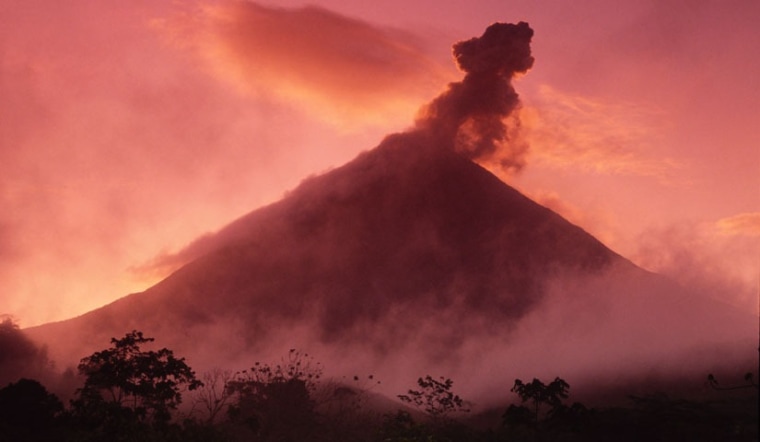NASA is designing a pair of robotic probes to keep tabs on how the planet is changing and to help forecasters predict natural disasters, such as volcanic eruptions, earthquakes and landslides.
One spacecraft will use radar to look for telltale signs of imminent disaster as it precisely measures small deformations in Earth's surface over time. Scientists hope to be able to zero in on regions that may be in danger so residents can prepare.
Volcanoes, for example, expand like a balloon when the pressure inside them increases, says John LaBrecque, the NASA program scientist for the mission known as Deformation, Ecosystem Structure and Dynamics of Ice, or DESDynI.
"By using radar, we hope to be able to predict the stresses building up in the volcano and hopefully provide a warning of the hazard that is developing," LaBrecque told Discovery News.
Scientists also expect to be able to see deformations in fault zones, areas where water has been depleted beneath Earth's crust, and landslides.
"Essentially, we're measuring the time lapse of the displacement of the ground over a period of years," said Paul Rosen, the project manager at NASA's Jet Propulsion Laboratory in Pasadena, Calif. "We can track the motion of the ground to within a few millimeters."
"You get this image of a volcano so you can actually infer what's happening all around it. We believe — especially for volcanoes — that we'll be able to improve our forecast of when they're actually going to erupt," Rosen said.
The second DESDynI satellite will be equipped with an optical remote sensing tool called LIDAR — Light Detection And Ranging — that will pulse laser light on Earth and measure the time it takes for the reflected signals to return. The technique is good for measuring the density of a forest, for example, as the light bouncing off the tops of trees will have a different return signal than light reflecting off bare ground.
Scientists hope to use the information to figure out how carbon is cycling through the planet's ecosystem — information that is important for understanding global climate change.
"This will answer some of the fundamental questions about where the planet's carbon is trapped," said Andre Dress, with NASA's Goddard Space Flight Center in Greenbelt, Md.
The third element of the mission involves monitoring the planet's ice sheets, which are particularly vulnerable to global climate change.
DESDynI is one of four Earth science missions recommended by the National Research Council. A mission concept review is expected to occur early next year. The launches would take place in October 2017.
